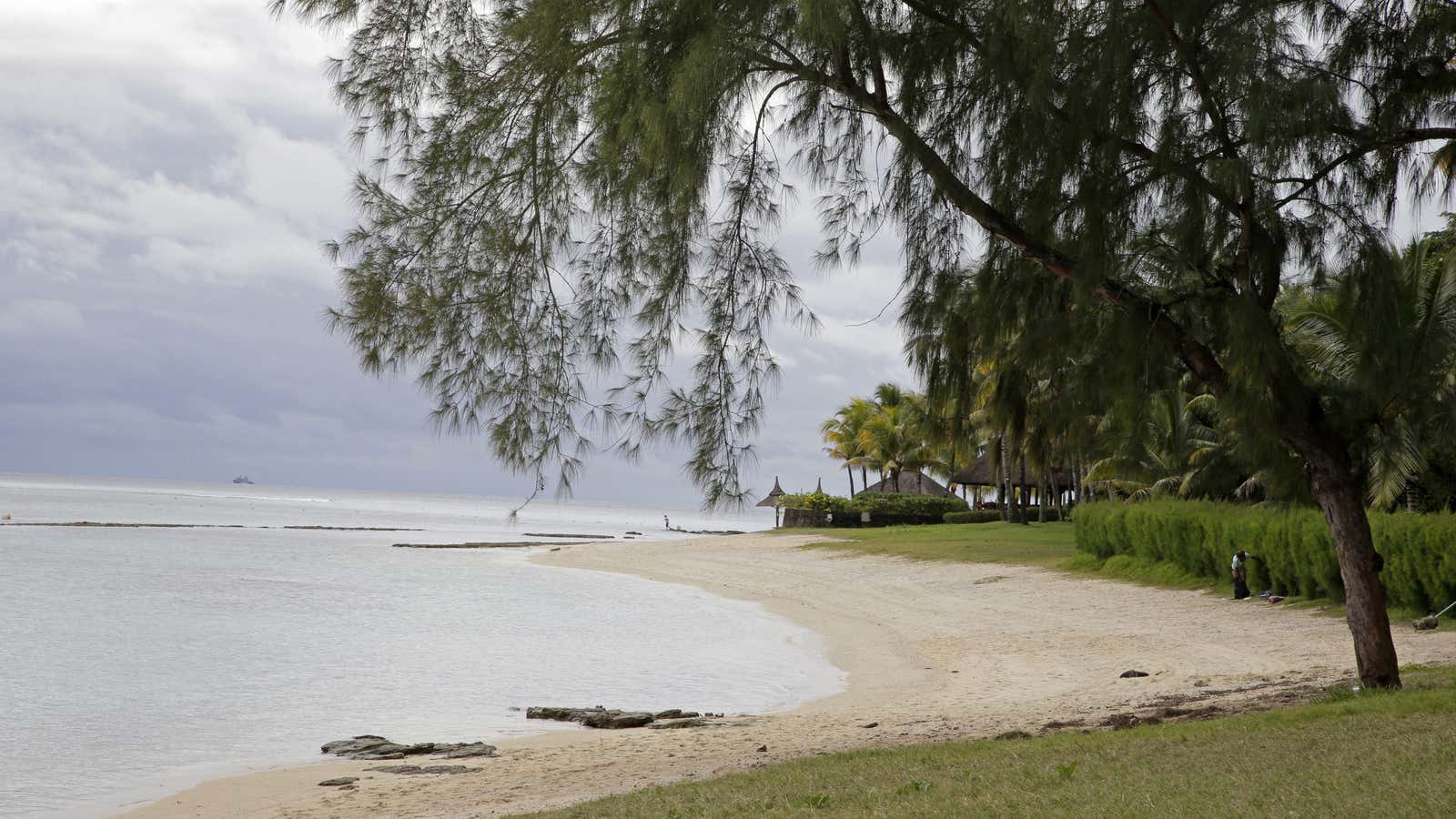Far beneath Mauritius’ inactive volcanoes lies an astonishing, important piece of the Earth’s history: a fragment of ancient continental crust. And no: it’s not Atlantis.
This discovery, which my colleagues and I have outlined in a newly published study, is extremely exciting. Discovering new pieces of continent will help geoscientists to understand the details of how continents break apart, and how the pieces can be better reconstructed to their pre-breakup configurations. This could, for example, be used as an important exploration tool for mineral deposits.
Our work demonstrates that continental break-up is often a complex and messy process. When continents begin to break apart, they can be stretched and fragmented, as new oceanic crust forms by continuous outpourings of magma at mid-ocean ridges. This forces the newly-formed crust to separate in opposite directions, taking the passive pieces of continent with them. Sometimes the sites of deep convection cells can suddenly shift, causing “ridge jumps”. This is how fragments of continent can become isolated, or “stranded” in many places across the ocean floor.
The Indian Ocean is a good place to study this, because it contains large fragments of continental crust like Madagascar, smaller ones like the Seychelles, and still smaller ones like the one now thought to underlie Mauritius.
Mauritius is an Indian Ocean island of volcanic origin, and lavas started forming there about 9 million years ago. Today it is dormant and most of the craters are covered with a rich variety of fauna and flora.
What we found
My colleagues and I suggest that during the active period, the lavas erupted on top of a small continental fragment that was then buried several kilometers below the new volcanic island. As the Mauritian lavas rose toward the surface, they passed through the stranded continental fragment, incorporating and dissolving some of it.
We were able to show that this continental fragment exists because we found tiny crystals of zircon – a mineral that can be analysed to provide age information – in a rare volcanic rock called trachyte, which is exposed at five different sites in Mauritius. We determined that the zircons were formed 2,500 to 3,000 million years ago. This is vastly older than even the earliest Mauritian volcanic rocks, which started erupting 9 million years ago.
The ages of the ancient zircons are also much older than the rocks present on the floor of the Indian Ocean, which all formed less than 200 million years ago. The nearest place where rocks as old as the ancient zircons can be found is in Madagascar, which is more than 700km to the west.
The ancient zircons recovered in the new research are the only accessible remnants of the old granitic rocks which are now hidden below. We cannot specify the exact size of the buried fragment of ancient continent, but we think it might be similar to the present areal extent of Mauritius, about 2000kmsq.
In addition to our discovery of this previously unknown continental fragment below Mauritius, my colleagues and I suggest that there may be other pieces of ancient continent scattered elsewhere on the floor of the Indian Ocean. These are now mostly submerged and covered by lavas, coral reefs or sand banks. They include the Saya de Malha Bank, the Chagos and Cargados-Carahos shoals, the Laccadive Ridge and the Nazareth Bank. They may have once been joined together 80 to 90 million years ago, in a now fragmented continent we have named “Mauritia”.
Continental break up
So, where did this all begin?
We have known for some time that the familiar continental entities of the southern hemisphere – including Africa, South America, Madagascar, India, Australia and Antarctica – were joined together about 500 million years ago. This huge landmass was called Gondwana. In fact, Gondwana was once part of an even larger “super-continent” called Pangea.
About 185 million years ago Gondwana began to drift apart and fragment due to plate tectonic processes that take place at the Earth’s outer shell of crustal rocks. Pieces of continent, both large and small, ride as “passengers” on newly-formed plates of oceanic crust; these continuously move away from each other at speeds of several centimetres per year.
The familiar present-day positions of the continents will continue to change, as plate tectonic forces drive them apart. For example, continental fragmentation appears to be starting in the East African Rift of Ethiopia, Kenya and Tanzania, where a new ocean basin might form tens of millions of years in the future, splitting East and West Africa into separate continental pieces.
In this sense, the idea that there are only seven continents is misleading because it is arbitrarily based on size, and would exclude substantial continental entities like Greenland and Borneo, as well as smaller ones like Madagascar, New Guinea and New Zealand. Because the sizes and shapes of continents have continuously changed over time, all continental entities can therefore be considered “fragments” of variable size.
It isn’t every day that someone can claim to have discovered a new piece of continent, even though the one in the new work described here is buried under a volcano and cannot be seen or touched. But its presence adds to a growing understanding of how the Earth works at present, and contributes to the question of how it worked in the past. These are the primary goals of geological science.
Lewis Ashwal, Professor, University of the Witwatersrand
This article was originally published on The Conversation. Read the original article.
